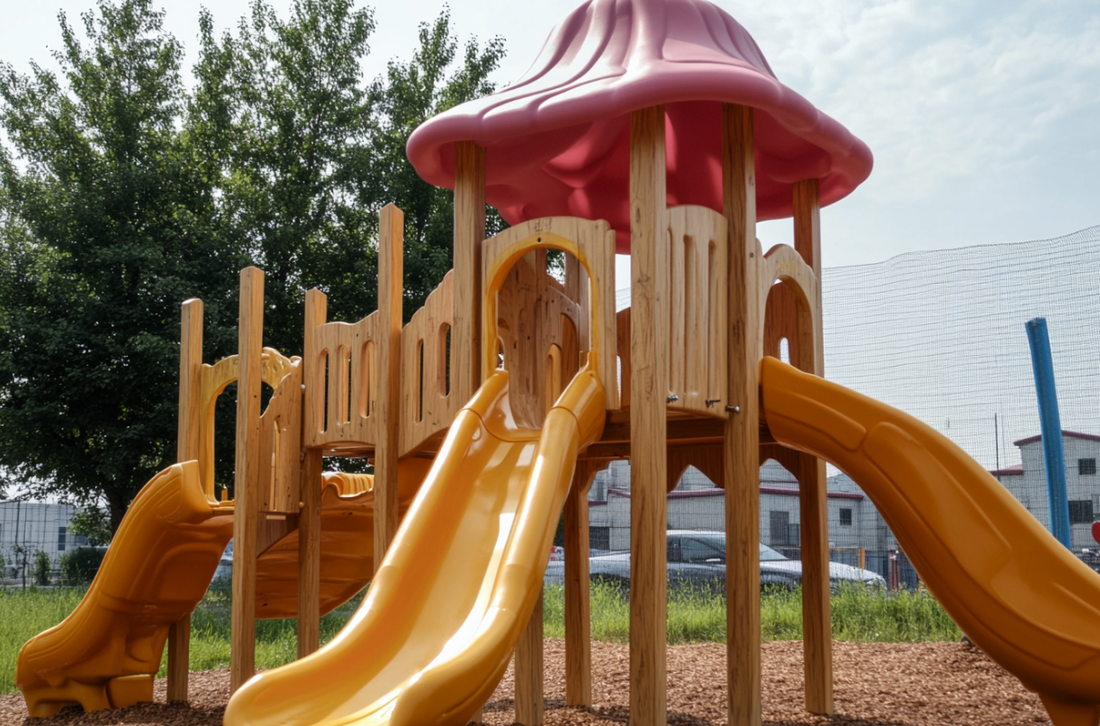
What kind of testing and certifications should outdoor playground sets comply with in America?
Share
When selling outdoor children's playground equipment (play sets, swing sets, climbing frames, slides, etc.) in the United States, certain federal regulations, product safety standards, and third-party testing requirements must be met. The following is a detailed explanation of the relevant certifications and testing:
I. Mandatory Certifications/Regulatory Requirements
|
Category |
Certification / Regulation |
Applicability Statement |
|
CPSIA |
Consumer/Product Safety/Improvement Act |
All products intended for children 12 years old and under must comply with regulations concerning lead content, phthalates, traceability labels, and more. |
|
ASTM F1148 |
Standards for Residential Metal/Wood Outdoor Play Equipment |
It is the primary technical standard for residential playsets in the U.S., covering requirements such as structural strength, fall hazards, and pinch point prevention. |
|
CPC Certificate |
Children's Product Certificate |
Children’s product compliance statements must be based on test reports from CPSC-recognized third-party laboratories. |
II.Which tests are required during the product certification process?
1、What does CPSIA certification require?
It primarily targets products intended for use by children aged 12 and under, ensuring they comply with U.S. safety standards. The certification requires testing for lead content, phthalate content, and small parts posing a choking hazard, as well as appropriate labeling and warning information on the product. Manufacturers must conduct risk assessments and retain relevant records, while third-party laboratories must perform testing to ensure the reliability of the results. CPSIA certification aims to reduce children's exposure to harmful substances and prevent injuries caused by product design defects. Specifically, it includes:
Strictly limiting lead content in children's products, particularly in paints, coatings, and substrates.
Limiting phthalate content in toys and care products.
Ensuring products have no small parts to prevent accidental ingestion and choking hazards.
Products must be labeled with age-appropriate warnings, small parts warnings, and other labels and warning information.
Manufacturers must conduct risk assessments on products, retain records, and recall and notify relevant products when necessary.
Product testing must be conducted by third-party certified laboratories to ensure the objectivity and reliability of the results.
2、What tests are required under the ASTM F1148 standard?
This standard applies to metal/wooden outdoor playground equipment for home use and covers a wide range of testing requirements:
In terms of materials and manufacturing, the standard checks the corrosion protection of metal parts, the anti-mold and anti-insect treatment of wooden parts, and the UV degradation resistance of plastic parts; Tests for the presence of harmful substances in coatings according to standards such as ASTM F963; and ensures that fasteners are securely installed.
Overall and performance requirements: Assesses gap and opening sizes to prevent children's heads or necks from becoming trapped; checks surfaces for sharp edges or points; inspects for protruding components; verifies the length and arrangement of ropes and other components; evaluates clamping and shearing points during operation; and ensures the strength and reliability of suspended components.
Entry and exit requirements: Inspect the design and layout of the equipment entrance; assess the design and installation of stairs, ramps, and slopes; verify the smoothness and safety of the transition area between the entrance and the platform.
Regarding equipment components, inspect the stability of the balance beam; assess the strength and stability of the climbing frame; test the flexibility and compression resistance of moving parts in upper limb training equipment; Inspect the smoothness and straightness of the tracks; verify the strength and reliability of the swing seats, chains, and suspension points.
Regarding playground layout and other aspects, assess the reasonableness of equipment spacing and layout; inspect whether equipment installation complies with standards; ensure structural integrity; specify the frequency and methods of regular maintenance inspections; require equipment to be equipped with clear warning signs and usage instruction labels.
3、What Tests and Evaluations Are Required to Obtain a Children’s Product Certificate (CPC)?
To obtain a CPC, products must undergo specific testing and evaluations to ensure compliance with U.S. safety regulations for children's products. These tests primarily focus on identifying harmful substances such as lead and phthalates, as well as meeting applicable product safety standards—for example, ASTM F963 for toy safety and 16 CFR Part 1505 for electrically operated toys.
Here are the specific requirements involved in CPC certification:
Product Scope:
CPC certification applies to products intended for children aged 12 and under. This includes toys, infant products, children's clothing, children’s furniture, and similar items.
Testing Requirements:
Total Lead and Phthalate Testing (per CPSIA):
Ensures the product does not contain excessive levels of lead or banned phthalates.
ASTM F963 Toy Safety Testing:
Covers physical and mechanical properties, flammability, and other hazards related to toys.
16 CFR Part 1505 Testing for Electrically Operated Toys:
Evaluates electrical safety performance for electronic or battery-operated toys.
Other Applicable Standards:
Depending on the product type, additional tests may be required—for example, flammability testing for children’s sleepwear, or safety testing for children’s furniture.
Reports and Certification:
Once testing is completed by a CPSC-accepted third-party laboratory, the results are compiled into a test report. Based on this, a valid CPC is issued for the product.
Labeling and Traceability:
The CPC must include product details, applicable safety standards, specific testing information, and the identification of the manufacturer or importer. This ensures full traceability of the product in the market.




